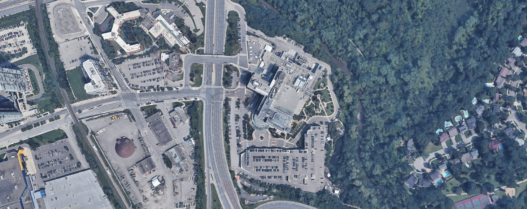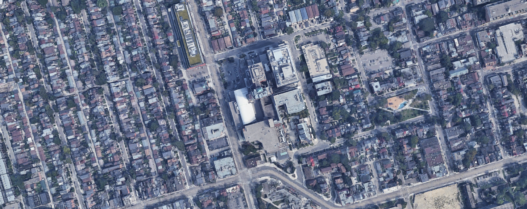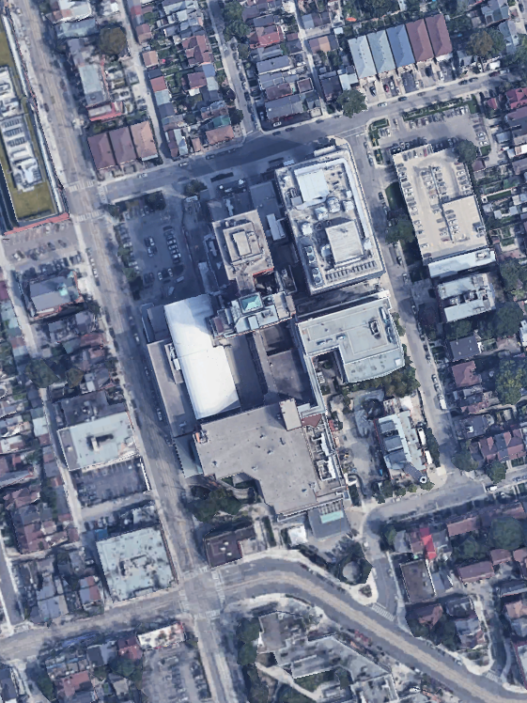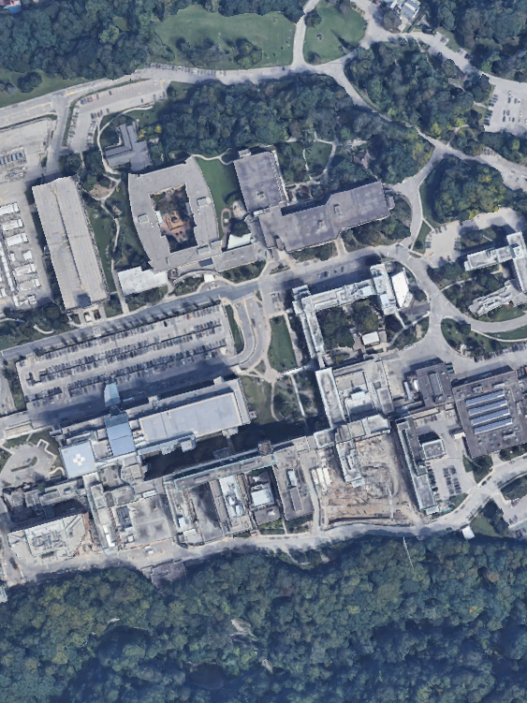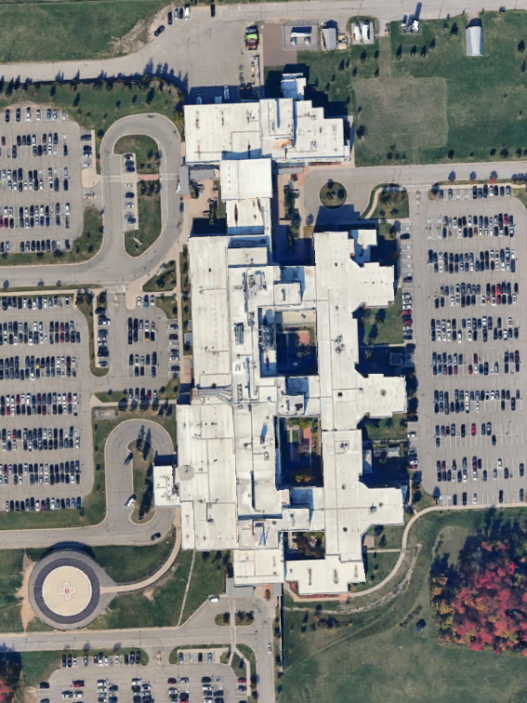In Newmarket, Ontario—where suburban sprawl meets aging infrastructure—Southlake Regional Health Centre has emerged as a vital anchor in the province’s increasingly burdened health system. Once a community hospital, Southlake now functions as a regional hub, serving residents of northern York Region and parts of Simcoe County. Its role has grown, but its capacity has not kept pace. And nowhere is this tension more visible than in its emergency department.
On a typical weekday, patients fill every seat in the waiting room before noon. Triage lines stretch. Staff work overtime. Hallway medicine is routine. What was once an occasional backup has become a permanent state of overcapacity. The department was designed for one reality. It now operates in another.
A Regional Hospital With Expanding Responsibilities
Southlake Regional Health Centre began as York County Hospital in the 1920s and evolved steadily over the decades. By the early 2000s, it rebranded and expanded its footprint with the goal of becoming a regional center for advanced care, including cardiac surgery, cancer treatment, and pediatric services.
The hospital’s emergency department was designed to accommodate a population much smaller than what it now serves. Since its last major expansion, York Region has undergone explosive growth, fueled by immigration, housing development, and shifting urban boundaries. What was once a suburban hospital now functions as a regional anchor facility within one of Canada‘s fastest-growing corridors.
The emergency department, originally built for a modest volume of visits, now handles a high volume of patients daily—many with complex medical needs. The infrastructure lags behind demand, and the pace of expansion has not kept up with the population it supports.
Population Growth as a Force Multiplier
Between 2011 and 2021, York Region’s population grew by more than 20 percent. Towns like East Gwillimbury, Aurora, and Georgina expanded quickly, with new subdivisions attracting families seeking affordable housing near the GTA. This rapid growth introduced thousands of new residents into Southlake’s catchment area.
While this population is younger on average than in many rural regions, that youth brings its own pressures. Pediatric visits spike during viral seasons. Maternal health demand has increased. And when primary care is unavailable, young families turn to emergency departments for reassurance and access.
At the same time, older residents are aging in place. In nearby towns, seniors make up a growing share of the population. Many live with multiple chronic conditions. When acute episodes strike, they head to Southlake. These patients often require more time, more testing, and more complex care. The result is a department forced to respond to both volume and complexity simultaneously.
Primary Care as a Missing Layer
Across suburban Ontario, primary care access has become increasingly uneven. In York Region, the ratio of family physicians to residents has not kept up with growth. Some newcomers wait months to secure attachment. Others rely on walk-in clinics that are overburdened or closing.
Virtual care options exist but are not always accessible—particularly for patients with language barriers, low digital literacy, or complex histories. As a result, many residents turn to emergency departments for issues that would be better managed in a clinic setting: minor infections, prescription refills, or chronic disease follow-up.
Each of these visits is individually appropriate. But in aggregate, they create a steady stream of low-acuity cases that crowd the emergency department and extend wait times. Triage becomes a balancing act—prioritizing the most urgent cases while ensuring no one falls through the cracks.
Mental Health Demand Outpaces Capacity
Mental health presentations at Southlake have increased significantly in recent years. Adolescents and young adults now account for a growing share of psychiatric emergencies. Anxiety, depression, suicidal ideation, and substance-related crises are common. For many, the emergency department is the first point of access.
Southlake does offer some dedicated mental health services. But these programs operate at full capacity. Community-based psychiatric support is limited. Waitlists for counseling and therapy can stretch for weeks. In the absence of immediate alternatives, emergency care becomes the default.
This reality places added pressure on emergency staff. Mental health patients often require extended observation. Some need private spaces or de-escalation support. Others require specialized consultations that are not immediately available. The environment is not optimized for psychiatric care—but it has become a proxy for a system without bandwidth.
Social and Economic Factors Shape Demand
Southlake’s service area includes both affluent communities and neighborhoods where housing insecurity and financial instability are growing concerns. The cost of living in York Region has surged. Rental prices have climbed. Income inequality has widened.
Economic pressures influence when and how people seek care. Residents working hourly jobs may delay appointments due to missed wages. Others face transportation barriers or cannot afford prescription medications. Preventive care becomes secondary. Health concerns escalate until the emergency department is the only accessible option.
These factors increase both visit volume and patient complexity. A resident arriving with poorly controlled diabetes may also face nutritional insecurity and unstable housing. An adolescent in crisis may have no access to school-based counseling. These aren’t emergency-created issues—but they arrive at the emergency door nonetheless.
Cultural and Linguistic Access
York Region is among Canada’s most diverse regions. Newmarket alone is home to communities that speak dozens of languages and represent a wide array of cultural backgrounds. Southlake’s emergency department must navigate not just medical concerns, but communication challenges and cultural differences in how care is perceived and received.
Language barriers can slow triage. Cultural norms may shape how patients describe symptoms, disclose personal information, or engage with clinicians. Interpreter services help, but they are not always immediate. These factors extend encounter times and increase diagnostic complexity.
Cultural perceptions of mental health, in particular, can influence care-seeking behavior. Some patients delay or avoid treatment due to stigma or unfamiliarity with Canadian health systems. When they do seek help, the emergency department becomes the default entry point—often at a stage where conditions are more advanced or urgent.
A Regional Magnet for Advanced Care
Unlike rural hospitals, Southlake is located within a dense urban-suburban corridor. But geography still plays a role in how patients access care. The hospital sits at a nexus point between northern York Region and southern Simcoe County. Residents from smaller towns to the north and east often bypass closer but less equipped facilities to come to Southlake for advanced care.
This regional pull adds to Southlake’s burden. Ambulances frequently transfer patients from outlying areas, and local walk-ins are joined by visitors from towns lacking their own emergency facilities or specialist programs. The catchment area grows not because of formal mandates but because of community behavior and system gaps.
Southlake’s location on a major highway also contributes to higher trauma volume. Traffic accidents along the corridor between Barrie and Toronto often result in ambulance runs to Southlake’s emergency department, particularly when other hospitals are on redirect or lack necessary resources.
Staffing Challenges
Workforce shortages are a defining feature of Southlake’s emergency department reality. While the hospital is in a larger labor market than northern facilities, it competes with Toronto hospitals for a limited pool of nurses, physicians, and support staff.
Burnout is high. The emergency department regularly operates at or above capacity. Staff report high levels of stress, limited time for patient interaction, and little room for recovery between surges. Recruitment is difficult, especially for specialized roles like emergency nurses, psychiatric clinicians, and radiology technicians.
Newcomers to the workforce often use Southlake as a stepping stone, gaining experience before moving to larger centers with more support and career mobility. This creates turnover and constant training demands. Meanwhile, the most experienced staff are stretched thin, managing both patient care and mentorship.
The hospital relies on overtime and shift reshuffling to cover gaps. While this ensures continuity, it is not sustainable. Staffing shortages extend wait times, reduce diagnostic speed, and make hallway medicine more common.
Provincial System and Policy Context
Southlake’s emergency wait times must be viewed within the broader Ontario health system. Hospitals across the province are experiencing similar pressures—overcrowded departments, capacity bottlenecks, and delayed discharges. The difference is in the intensity and drivers of these trends.
Provincial investments in hospital infrastructure and staffing have yet to catch up to demographic change in fast-growing suburban regions. Funding is often based on historical use rather than forward-looking projections. As a result, Southlake receives funding levels aligned with its past, not its present or future.
Efforts to divert non-emergency patients to urgent care centers or primary care networks have been limited in reach. These models require time to build trust in the community and coordination across institutions. In the meantime, emergency departments remain the default safety net.
Discharge delays also tie up beds. Patients who are medically stable but awaiting long-term care placement or home supports often remain in hospital for days or weeks. These “alternate level of care” patients block new admissions and reduce emergency room throughput.
Conclusion
Southlake Regional Health Centre’s emergency department reflects the pressures of a changing Ontario: rapid suburban growth, insufficient primary care, demographic complexity, and uneven access to mental health and chronic disease management. It is not the failure of one institution. It is the convergence of many pressures—economic, cultural, geographic, and structural.
The hospital continues to deliver high-quality care under difficult conditions. Staff remain committed. Innovations continue. But resilience has limits.
Addressing these pressures requires sustained policy attention. Not just capital investment, but system design that matches the realities of suburban hospitals with regional responsibilities. Staffing pipelines must be expanded. Community care must be strengthened. And suburban planning must integrate health infrastructure as part of growth—not as an afterthought.
Until then, Southlake’s emergency department will remain crowded. Wait times will remain long. And its clinicians will keep doing more with less—because they have no choice.








